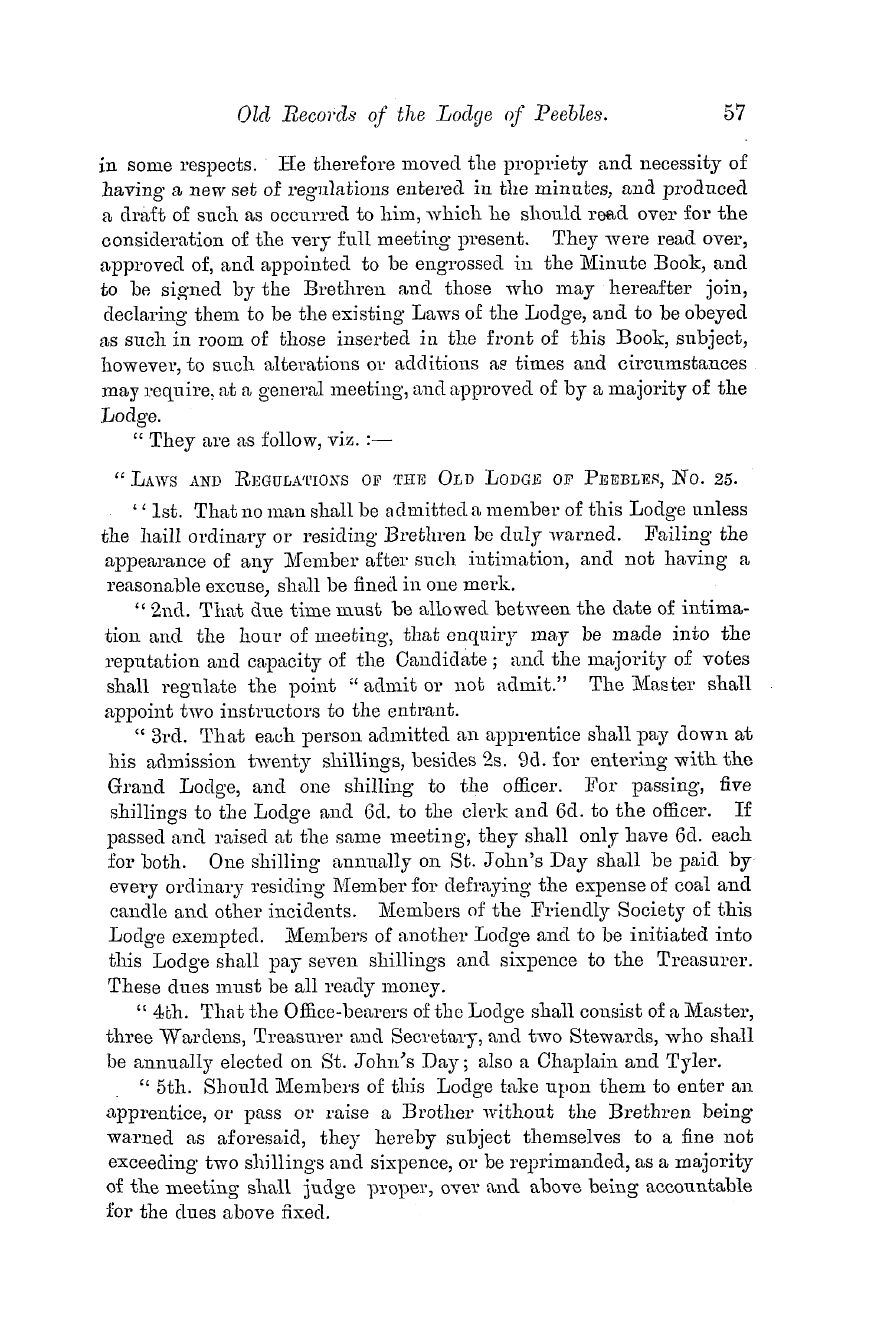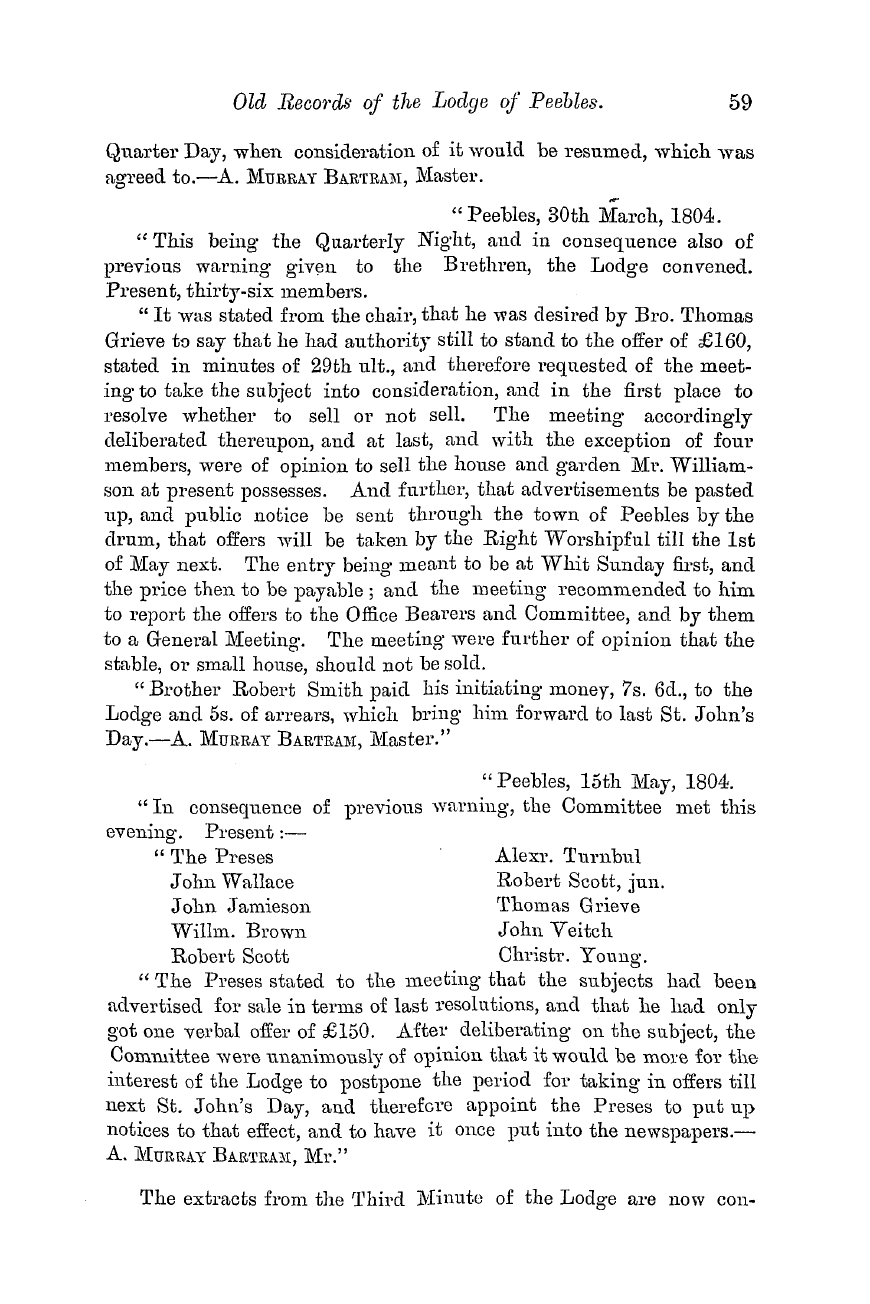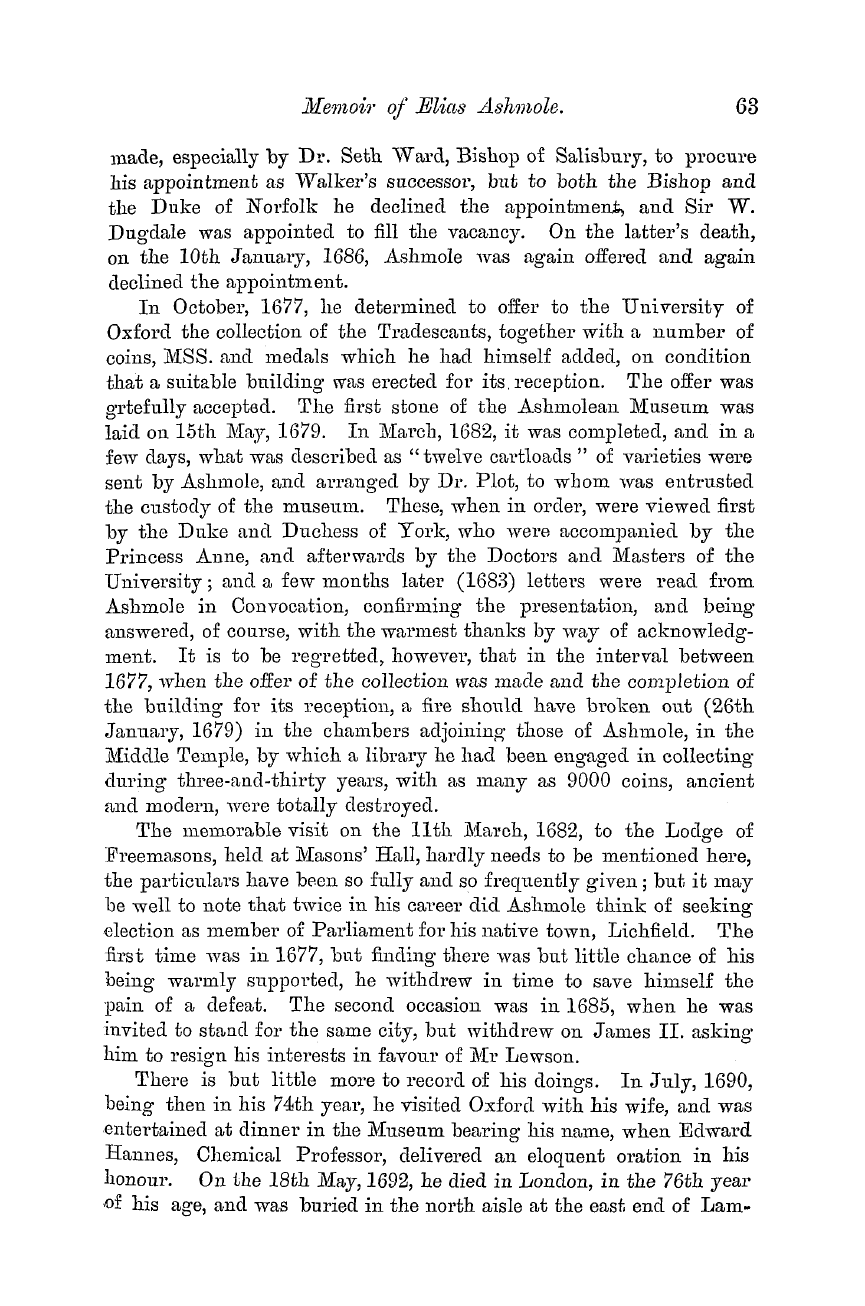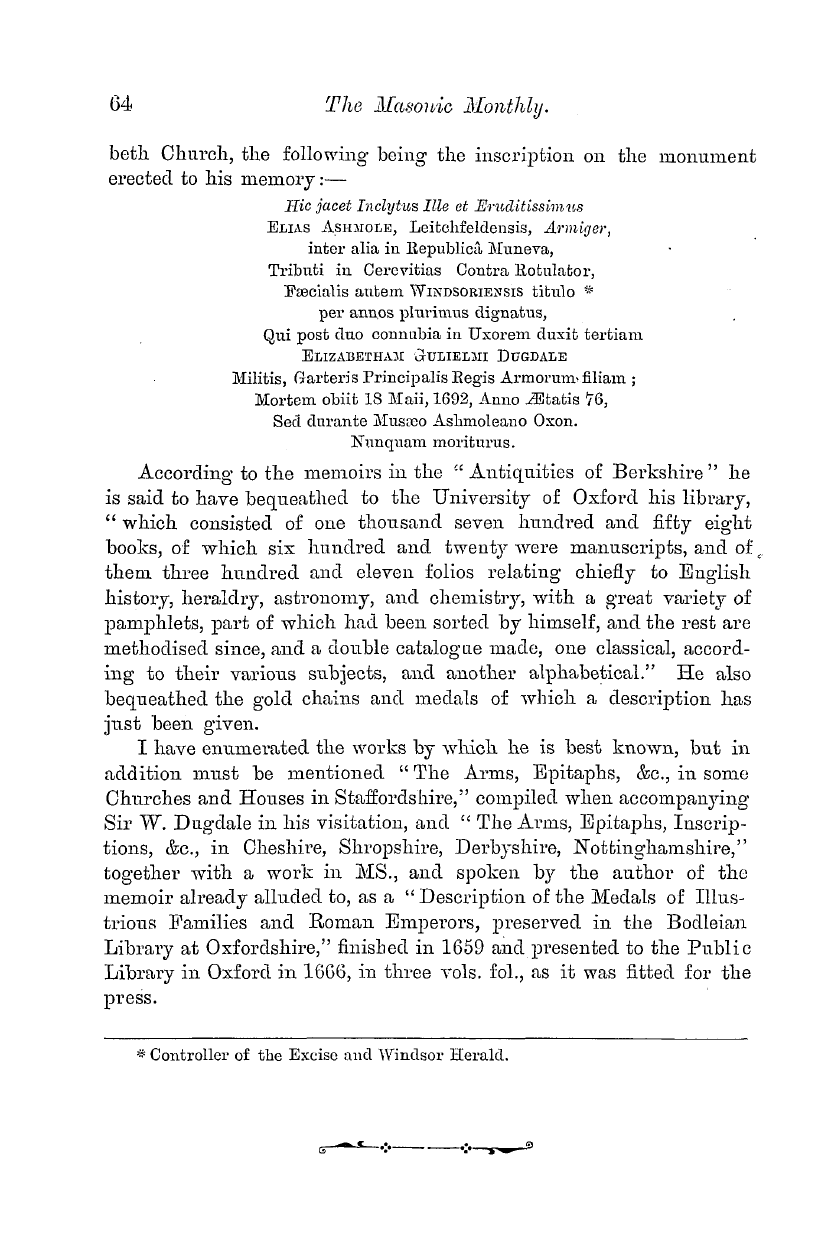-
Articles/Ads
Article EARLY HAUNTS OF FREEMASONRY. ← Page 2 of 4 →
Note: This text has been automatically extracted via Optical Character Recognition (OCR) software.
Early Haunts Of Freemasonry.
as the "Grand Lodge of ALL England . " With these four Lodges we have become so familiar , through the medium of Bro . Gould ' s researches , that it will be unnecessary to do more than enumerate their respective places of meeting , which were the Goose and Gridiron
Alehouse , St . Paul ' s Churchyard , the Crown Alehouse , Parker ' s-lane , near Drury-lane ; the Apple Tree Tavern , Charles-street , Covent Garden ; and the Rummer and Grapes Tavern , in Channel-row . There was an appropriateness in the locality where the senior of the " Four Old Lodges " met . It is still in doubt whether Sir Christopher Wren
Avas a Mason in the sense in which the word is now used ; but there is no doubt that his fame as an architect , and especially as the architect of St . Paul's Cathedral , must have had much to do with the esteem in which the Guild of Freemasons was held . He may or may not have been a member of the old Time Immemorial Lodge , now known as
Antiquity No . 2 on the roll of England , but it was quite natural that the foremost Lodge should assemble under the shadow of his greatest Avork . Many gentlemen , no doubt , had sought the honour of being ' received into that Craft which had laboured so successfully under his auspices to rebuild London , but the majority of the members were still operative Masons , and they would naturally select the neighbourhood of St . Paul ' s for holding their assemblies .
Not inappropriate , too , was the locality where original No . 4 met ; seeing that they were , comparatively speaking , Avithin a stone ' s throw of Westminster Abbey—one of the oldest and grandest of the architectural beauties of the Metropolis . A few years later , indeed , we find it located much nearer to the venerable abbey , namely , at the
Horn Tavern , in New Palace-yard . Here it remained for many years ; and in 1768 , though meeting at a tavern in Tothill-street , it adopted for its title that of the " Old Horn Lodge . " But there appears to be no special reason Avhy the other original lodges should have met where they did , beyond , probably , the fact that the taverns
they frequented were conveniently situated for the members , who were socially of no great distinction . Indeed they , in conjunction with original No . 1 , constituted the operative element in the Craft , while for the speculative we must , as Bro . Gould has pointed out , turn to original No . 4 ; Dr . Anderson , author of the Constitutions , and
Brothers Payne , ' Grand Master in 1718 and 1720 , and Dr . Desaguliers , Grand Master in 1719 , being among its members . One point , perhaps , it may be well to notice here , namely , that Freemasons would always appear to have had a special affection for the neighbourhood round about our present Hall . A glance at the different lists of lodges , that Avere published at different times , Avill show that , taking Freemasons' Hall as a centre , and describing from it a circle with a very
Note: This text has been automatically extracted via Optical Character Recognition (OCR) software.
Early Haunts Of Freemasonry.
as the "Grand Lodge of ALL England . " With these four Lodges we have become so familiar , through the medium of Bro . Gould ' s researches , that it will be unnecessary to do more than enumerate their respective places of meeting , which were the Goose and Gridiron
Alehouse , St . Paul ' s Churchyard , the Crown Alehouse , Parker ' s-lane , near Drury-lane ; the Apple Tree Tavern , Charles-street , Covent Garden ; and the Rummer and Grapes Tavern , in Channel-row . There was an appropriateness in the locality where the senior of the " Four Old Lodges " met . It is still in doubt whether Sir Christopher Wren
Avas a Mason in the sense in which the word is now used ; but there is no doubt that his fame as an architect , and especially as the architect of St . Paul's Cathedral , must have had much to do with the esteem in which the Guild of Freemasons was held . He may or may not have been a member of the old Time Immemorial Lodge , now known as
Antiquity No . 2 on the roll of England , but it was quite natural that the foremost Lodge should assemble under the shadow of his greatest Avork . Many gentlemen , no doubt , had sought the honour of being ' received into that Craft which had laboured so successfully under his auspices to rebuild London , but the majority of the members were still operative Masons , and they would naturally select the neighbourhood of St . Paul ' s for holding their assemblies .
Not inappropriate , too , was the locality where original No . 4 met ; seeing that they were , comparatively speaking , Avithin a stone ' s throw of Westminster Abbey—one of the oldest and grandest of the architectural beauties of the Metropolis . A few years later , indeed , we find it located much nearer to the venerable abbey , namely , at the
Horn Tavern , in New Palace-yard . Here it remained for many years ; and in 1768 , though meeting at a tavern in Tothill-street , it adopted for its title that of the " Old Horn Lodge . " But there appears to be no special reason Avhy the other original lodges should have met where they did , beyond , probably , the fact that the taverns
they frequented were conveniently situated for the members , who were socially of no great distinction . Indeed they , in conjunction with original No . 1 , constituted the operative element in the Craft , while for the speculative we must , as Bro . Gould has pointed out , turn to original No . 4 ; Dr . Anderson , author of the Constitutions , and
Brothers Payne , ' Grand Master in 1718 and 1720 , and Dr . Desaguliers , Grand Master in 1719 , being among its members . One point , perhaps , it may be well to notice here , namely , that Freemasons would always appear to have had a special affection for the neighbourhood round about our present Hall . A glance at the different lists of lodges , that Avere published at different times , Avill show that , taking Freemasons' Hall as a centre , and describing from it a circle with a very

































































